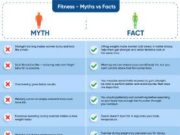In the ever-evolving landscape of fitness and health, the quest for effective fat loss strategies often leads individuals down a myriad of paths, from high-intensity interval training to the latest diet craze. Yet, nestled within the myriad of options is a time-tested method that not only transforms physiques but also fortifies the body in myriad ways: resistance training. Often associated with muscle building and strength enhancement, resistance training is a powerful, and sometimes overlooked, ally in the battle against unwanted fat. This article delves into the multifaceted benefits of resistance training for fat loss, unraveling the science and unveiling the secrets behind its effectiveness. Whether you’re a seasoned gym-goer or a curious beginner, understanding how resistance training can reshape not just your body but your approach to fitness might just be the key to unlocking your healthiest self.
Building Strength and Shedding Pounds
Resistance training is a powerful ally in the quest for fat loss, offering benefits that extend beyond mere calorie burning. When you engage in resistance exercises, your body not only burns calories during the workout but continues to do so after, thanks to an increase in resting metabolic rate. This is because building muscle mass requires energy, and more muscle translates to higher energy expenditure even at rest. Additionally, resistance training can help reshape your body, giving you a leaner appearance as you lose fat.
- Increased Muscle Mass: More muscle means a higher metabolism, which aids in burning more calories.
- Enhanced Fat Oxidation: Resistance training boosts your body’s ability to use fat as fuel.
- Improved Insulin Sensitivity: This type of exercise can help regulate blood sugar levels, reducing fat storage.
- Long-Term Fat Loss: Unlike cardio, resistance training builds sustainable habits that contribute to lasting weight management.
Incorporating resistance exercises into your routine not only aids in fat loss but also fortifies your body against future weight gain, making it an essential component of a comprehensive fitness plan.

Metabolism Boost: The Caloric Burn of Resistance Training
Resistance training is not just about building muscle; it’s a powerhouse for elevating your metabolic rate. When you engage in resistance exercises, your body enters a state of increased caloric expenditure, both during and after the workout. This phenomenon, known as the afterburn effect or excess post-exercise oxygen consumption (EPOC), ensures that your body continues to burn calories at an accelerated rate even when at rest.
What makes resistance training a standout for fat loss is its ability to transform your body into a more efficient calorie-burning machine. Here’s how it works:
- Muscle Mass Increase: Muscle tissue burns more calories than fat, even when you’re not exercising. More muscle means a higher resting metabolic rate.
- Enhanced Afterburn: The intensity of resistance workouts keeps your metabolism elevated for hours post-exercise.
- Improved Insulin Sensitivity: Regular resistance training can enhance how your body uses insulin, helping to regulate fat storage.
Incorporating resistance training into your routine not only helps in sculpting your physique but also in maximizing your body’s ability to shed unwanted fat, making it an essential component in any fat loss strategy.

Muscle Mass and Fat Loss: The Synergistic Effect
When it comes to shedding unwanted pounds, the role of resistance training often goes underappreciated. Not only does it help sculpt a lean physique, but it also enhances the body’s ability to burn fat more efficiently. Building muscle mass is like turning your body into a high-performance engine, increasing your basal metabolic rate and ensuring you burn more calories even at rest. This process, known as the afterburn effect, can last for hours post-workout, giving your metabolism a significant boost.
- Increased Energy Expenditure: Resistance training requires energy, and as muscle mass increases, so does your energy expenditure.
- Improved Insulin Sensitivity: Enhanced muscle mass helps your body use insulin more effectively, reducing the risk of storing excess fat.
- Hormonal Balance: Engaging in regular resistance training can balance hormones that influence fat storage and muscle growth, such as cortisol and testosterone.
By integrating resistance training into your routine, you’re not just focusing on losing fat; you’re fostering a harmonious relationship between muscle growth and fat reduction. This synergy can lead to more sustainable weight management and improved overall health.

Crafting a Personalized Resistance Training Plan for Optimal Results
Creating a tailored resistance training plan is a powerful strategy to maximize fat loss while enhancing overall fitness. A personalized plan takes into account your unique fitness level, goals, and preferences, ensuring that each session is both challenging and enjoyable. Start by assessing your current fitness level and setting realistic goals that align with your desired outcomes. Incorporate a variety of exercises that target major muscle groups to stimulate muscle growth and increase metabolic rate. This approach not only aids in fat loss but also contributes to a leaner, more toned physique.
When designing your plan, consider the following elements to enhance its effectiveness:
- Variety: Mix compound movements like squats and deadlifts with isolation exercises such as bicep curls to keep your workouts engaging and balanced.
- Progression: Gradually increase the intensity by adjusting weights, repetitions, or sets to continuously challenge your body.
- Rest and Recovery: Allow adequate time for muscle recovery by scheduling rest days and incorporating stretching or yoga into your routine.
- Consistency: Stick to a regular workout schedule to build momentum and achieve lasting results.
By integrating these components, you create a dynamic and effective resistance training plan that not only supports fat loss but also fosters long-term health and fitness success.






























